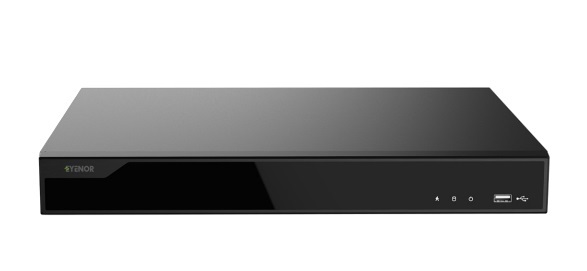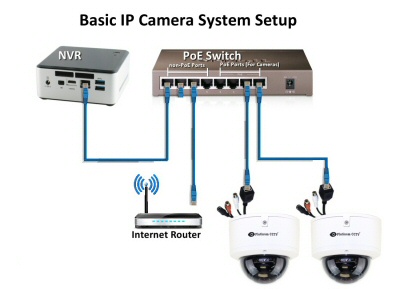Introduction
In this NVR Channel Setup Guide, we’ll help you make a smart decision without the tech overwhelm. Whether you’re setting up a few cameras for your home or a full-scale system for your office, we’ve got you covered with straightforward advice, practical tips, and comparisons that make sense.
When it comes to building a solid home or business surveillance system, one of the first questions people ask is: “How many NVR channels do I really need?” It sounds simple, but choosing the right number of channels is like picking the right size toolbox—you want enough space for all your tools, but not so much that it becomes bulky or expensive.
Table of Contents
- Introduction
- What Is an NVR Channel and Why Does It Matter?
- Understanding NVR Camera Compatibility
- NVR Channel Configuration Basics
- How Many NVR Channels Are Needed for Home vs. Business?
- 4 Channel NVR vs 8 Channel: Which Is Right for You?
- Best NVR for Multiple Cameras
- Choosing NVR Capacity for Future Expansion
- NVR Bandwidth Requirements Explained Simply
- Scalable NVR Solutions for Growing Systems
- Surveillance Channel Planning Made Easy
- Where to Shop for a Smart NVR Setup
- Conclusion
- FAQs
What Is an NVR Channel and Why Does It Matter?
Imagine your NVR (Network Video Recorder) is like a multi-plug extension cord. Each “slot” or “port” on that cord is a channel—each designed to connect one camera. So if you have a 4-channel NVR, you can plug in up to four cameras.
Your NVR channel setup determines how many cameras your system can handle, making it the foundation of your security layout.
Understanding NVR Camera Compatibility
Not all cameras are created equal, and not every NVR works with every camera. Your system must support IP camera system setup, meaning the cameras and the NVR need to “speak the same language.”
Look for these factors:
- Resolution compatibility (e.g., 1080p, 4K)
- ONVIF compliance (ensures broader compatibility)
- PoE (Power over Ethernet) or wireless support
Getting the right match ensures smoother video and avoids frustration down the line.
NVR Channel Configuration Basics
Once you’ve chosen an NVR, it’s time to configure it. Your NVR channel configuration includes:
- Assigning each camera to a channel
- Setting resolution and frame rate per camera
- Scheduling recording (24/7, motion-triggered, etc.)
Most modern NVRs have intuitive software that guides you through this, but a clear plan up front makes setup faster and easier.
How Many NVR Channels Are Needed for Home vs. Business?
For home security, 4 to 8 channels is often enough. Think:
- Front door
- Backyard
- Driveway
- Living room
For small businesses, start with 8 to 16 channels. Add:
- Entry points
- Parking lot
- Storage rooms
- Office areas
Larger businesses or warehouses? Consider 32 to 64 channels or a multi-channel NVR system for complete coverage.
4 Channel NVR vs 8 Channel: Which Is Right for You?
This is one of the most common decisions people face.
- 4 Channel NVR: Great for simple setups. Budget-friendly, easy to manage.
- 8 Channel NVR: Offers more flexibility. Even if you start with 4 cameras, you’ve got room to grow.
Pro tip: Always plan for at least two extra channels than you think you need. It’s like buying a coat a size up—you’ll appreciate the extra room.
Best NVR for Multiple Cameras
When choosing the best NVR for multiple cameras, focus on:
- Storage (hard drive size)
- Remote access features
- Video compression technology (like H.265+ for saving space)
- Smart alerts and motion detection
A great choice is the Norden NVR system, known for reliable performance. You can shop BUSINESS TECHNOLOGY SOLUTION to find the right one for your needs.
Choosing NVR Capacity for Future Expansion
If you’re not sure how many cameras you’ll need in the future, go for a model with more channels. This is where NVR expansion options come into play.
Look for features like:
- Additional Ethernet ports
- USB or network expanders
- Cloud support
It’s like buying a modular sofa—you can add pieces as your needs grow.
NVR Bandwidth Requirements Explained Simply
Think of bandwidth like a road. If you’ve got too many cars (cameras) trying to pass through a narrow road (low bandwidth), everything slows down.
Each camera uses bandwidth based on its resolution and settings. For smooth performance:
- 1080p camera = approx. 2-4 Mbps
- 4K camera = 8-16 Mbps
Tip: Use the NVR software to manage bitrate and optimize your setup.
Scalable NVR Solutions for Growing Systems
Scalable NVR solutions are ideal if you’re setting up a business or planning a future-proof home system.
Features to look for:
- Support for 32+ channels
- External storage (NAS)
- Compatibility with smart home integrations (Alexa, Google Home)
This ensures you won’t have to replace the whole system when you add new cameras.
Surveillance Channel Planning Made Easy
Planning your camera layout helps you make the most of your channels. Walk through your property and ask:
- What are the main entry points?
- Where is valuable equipment stored?
- What areas are hard to see?
Then sketch a simple map and mark where each camera should go. This saves time during installation and avoids blind spots.
Where to Shop for a Smart NVR Setup
If you’re ready to upgrade or build your system, check out Promallshop’s business technology section. You’ll find:
- Different NVR models
- Bundled camera kits
- Pricing and specs
Shopping here simplifies the process and ensures you’re buying trusted equipment.
Conclusion
Deciding how many NVR channels you need doesn’t have to be overwhelming. With this NVR Channel Setup Guide, you now know what to look for, how to plan your system, and how to keep it scalable for the future.
Whether it’s a cozy home setup or a full-blown office installation, your perfect configuration is just a few decisions away.
Need more tips? Check out more articles on Promallshop Blog to stay ahead in tech and security.
FAQs
No, most 4-channel NVRs are fixed. You’ll need to buy a new unit with more channels.
Both matter. More channels let you cover more areas, but higher resolution gives clearer footage.
Not necessarily. Many modern NVRs are plug-and-play and come with simple setup apps.
Make sure both the camera and NVR support ONVIF or the same manufacturer protocol.
For small setups, yes. For larger systems, wired is more stable and secure.





